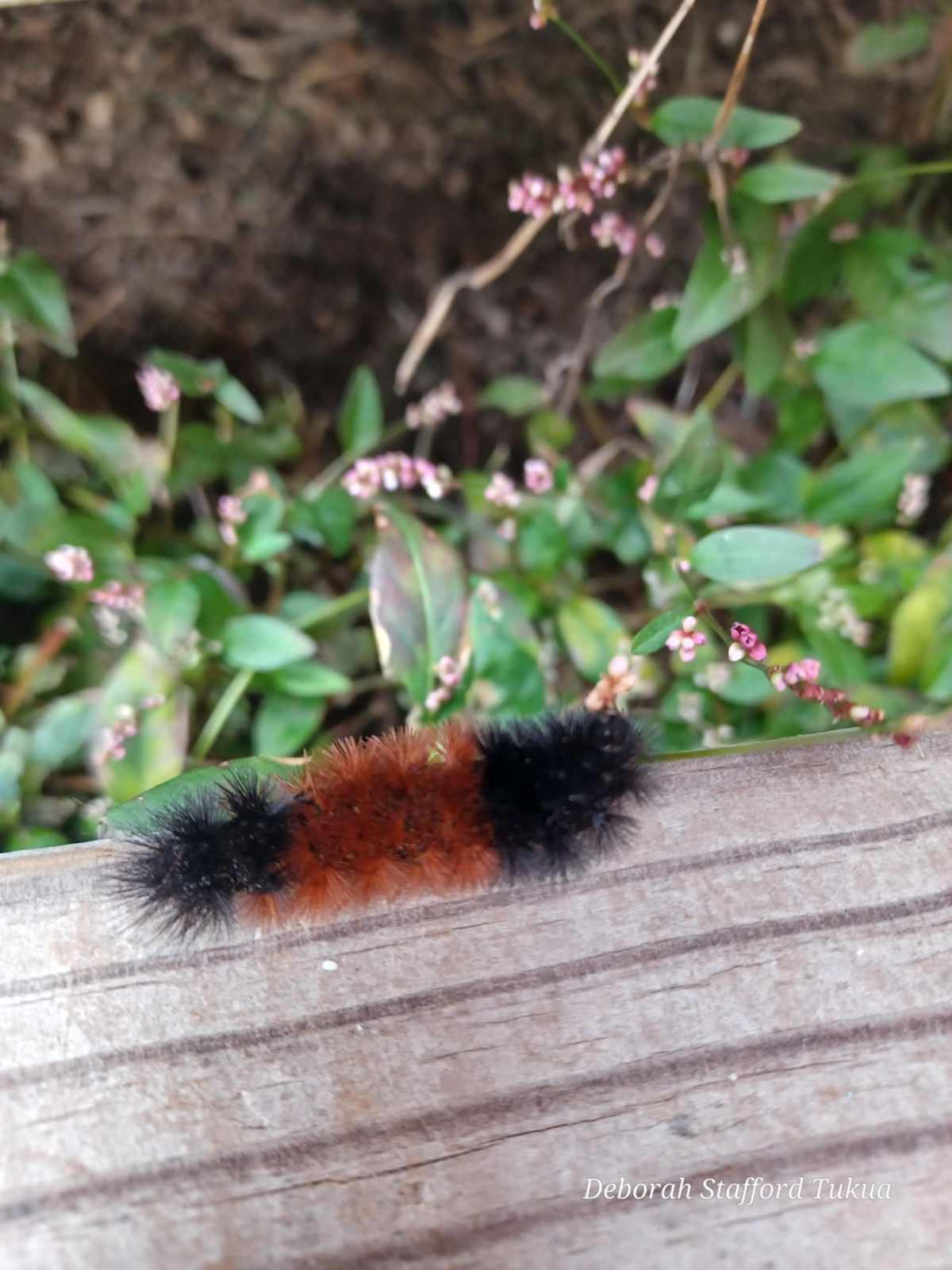Woolly Bear sounds like a cuddly, furry stuffed animal, but it’s the name of a real, live insect–a fuzzy, banded caterpillar. This bristly caterpillar is about two inches long. It is recognized by its three distinct color bands–black, rust, and black.
It’s not venomous and doesn’t sting, but some people develop an irritating rash after touching the caterpillar’s bristles. So be careful.
In fall you may see it during the day, feeding on plants, preparing to hibernate.
Woolly Bear caterpillars are in the larva stage. The caterpillar overwinters beneath logs, rocks, and leaf litter. It’s body produces a natural antifreeze, enabling it to survive extreme cold temperatures. Amazing. It can withstand -90ᵒ F.
In the spring, Woolly Bears emerge from hibernating, feed, and then form a cocoon and pupate. About two weeks later, an orange-yellow, Isabella tiger moth emerges. The moth remains active at night all summer.
I’ve seen woolly bears crawling around, but I’m not sure I’ve seen an Isabella Tiger moth. Have you?
This brings us to another fascinating fact. The reason most of us haven’t seen the Isabella tiger moth is because they’re nocturnal creatures. These moths are most active after dark: flying, feeding on flower nectar, and mating.
Weather Forecasting Folklore
Like the ground hog, Woolly bear caterpillars, also known as Woolly worms, are also a fun part of weather forecasting folklore. It’s bristly body has 13 segments–like the 13 weeks of winter.
During this time of year, before the caterpillars hibernate, some people look at the length of the three bands, (black, rust, and black), on the caterpillar to predicate what type of winter we’ll have.
-If all three bands are about the same length, then an average winter is predicted.
-If the rust-colored center band is longer than the two black bands, a mild winter is predicated.
- If the rust-colored center band is small and the two black bands are longer, a harsh winter is predicted.
-If the black band near the head of the caterpillar is shorter than the rest, winter will begin mild. And on it goes. Confused yet? Yeah, me too.
I had the pleasure of watching a woolly bear caterpillar with two of my grandchildren this week. As the caterpillar stretched to reach a plant, its front black band expanded, making that portion look super long. For that moment it appeared winter would be severe at the onset. But then the caterpillar retracted, giving us a prediction of a mild winter. You can probably tell, I don’t recommend looking to the Woolly Bear for an accurate winter forecast.
I do find nature fascinating. There are signs in the natural world that help us prepare for the season ahead. Ultimately we look to Creator God, trusting the One who created and controls the seasons, nourishes, and sustains the earth.
Until next time, living and loving life on Holly Creek,
Deborah S. Tukua, children’s author of Traveling the Natchez Trace Parkway from A to Z.
Keep connected. Join our list at www.deborahstukua.com
